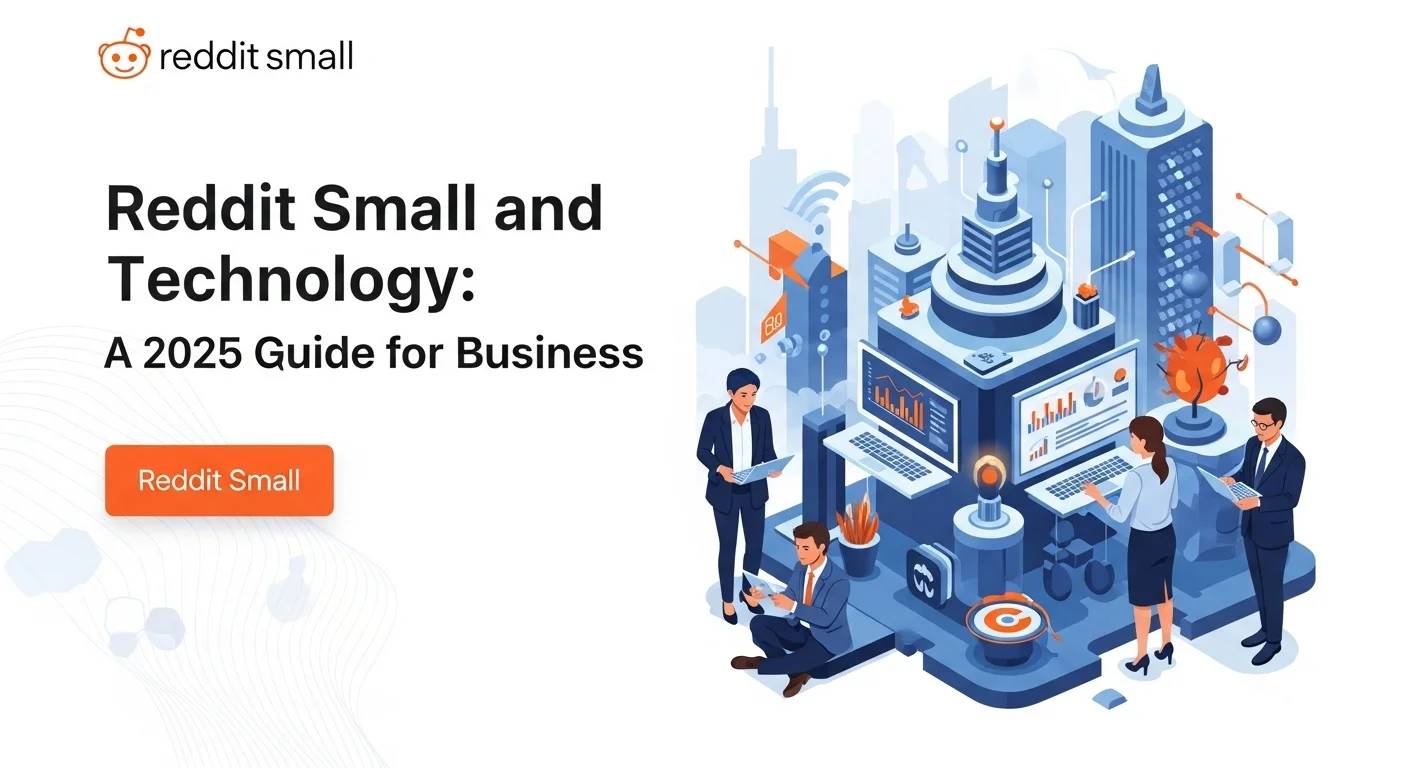From Idea to Impact: How Small Businesses Can Win with Technology in 2025

Executive Summary
In my years as a tech strategist for small businesses, I've seen countless brilliant ideas struggle because they lacked the right tech backbone. This isn't about having the fanciest gadgets; it's about making smart, strategic choices that turn a great concept into a profitable reality. This guide is your roadmap. We'll cut through the jargon and explore the real-world tools that can launch your venture. We'll cover everything from AI that can act as your 24/7 assistant, to cloud services that give you enterprise-level power on a startup budget, and cybersecurity that protects your hard work. I'll share practical project ideas, innovative approaches for online shops, and scalable concepts for niche markets. Think of this as a conversation with an experienced guide, showing you how to use technology to not just compete, but to create new streams of income and build a business that lasts.
Table of Contents
Why Technology is Your Small Business's Secret Weapon
Over the last decade, I've sat down with hundreds of entrepreneurs. They all have one thing in common: a spark, a unique idea they believe in. But the question that separates the ones who succeed from those who stall is often, 'How do you plan to use technology?' In today's world, tech isn't just an add-on; it's the engine, the framework, and the security guard for your entire business. It levels the playing field, allowing a solopreneur in their garage to offer a customer experience that rivals a major corporation. It's how a simple idea for a local shop or a niche service transforms into a scalable, resilient business ready to take on the world.
Let's get practical. Think about starting a small retail shop. Ten years ago, that meant finding the perfect physical location. Today, it means building a powerful e-commerce store on a platform like Shopify, using AI to suggest products your customers will love, and managing your inventory seamlessly from the cloud. That's the power of technology: it turns traditional concepts into data-driven, customer-focused powerhouses. The same goes for niche industries. I worked with a custom furniture maker who was struggling with production times. By integrating 3D modeling software and a CNC machine, he was able to cut production time by 60% and offer intricate custom designs he couldn't before. Technology didn't just make his business better; it opened up an entirely new market for him.
Table of Contents
- The Core Tech Pillars: AI, Cloud, and Cybersecurity
- Building Your Tech Foundation: A Practical Guide
- Smart Strategies to Maximize Your Tech Investment
The Core Tech Pillars: AI, Cloud, and Cybersecurity
To build a strong business, you need a strong foundation. In tech, that foundation rests on three pillars. Don't let the terms intimidate you; they're more accessible than ever.
Artificial Intelligence (AI): Forget killer robots from the movies. For a small business, AI is like hiring an incredibly efficient assistant who works 24/7. AI-powered chatbots can answer customer questions on your website day and night, improving satisfaction while you sleep. In your marketing, AI can analyze customer behavior to show your ads to the people most likely to buy. My favorite part for new entrepreneurs? Generative AI tools like ChatGPT can help you write blog posts, social media updates, and website copy, which is a massive time-saver and a great way to generate new income through content.
Cloud Computing: This is probably the biggest game-changer for small businesses. The cloud simply means you can access powerful software and storage over the internet instead of buying and maintaining expensive physical servers. Services like Google Workspace or Microsoft 365 allow your team to collaborate from anywhere. Accounting software like QuickBooks Online handles your finances for a small monthly fee. Platforms like Amazon Web Services (AWS) let you run a global app without a single server in your office. The cloud gives you incredible flexibility and power, all on a pay-as-you-go basis, which is perfect for a lean startup budget.
Cybersecurity: I can't stress this enough: as soon as you go digital, you become a target. A single data breach can destroy a small business's reputation and finances. Cybersecurity isn't an 'extra'—it's essential. This means having a good firewall and antivirus software, but more importantly, it means building good habits. Use strong, unique passwords for everything. Turn on multi-factor authentication (MFA) on all your important accounts (like email and banking). Regularly back up your important data to a secure cloud location. The most crucial defense, however, is training yourself and your team to spot phishing emails and other online scams. A little bit of vigilance goes a long way in keeping your business safe.

Building Your Tech Foundation: A Practical Guide
Okay, so you're sold on the 'why.' Now let's get into the 'how.' Building your tech stack—the collection of tools you use to run your business—can feel overwhelming, but it doesn't have to be. My advice is always to start simple and choose tools that can grow with you. Here’s a breakdown of what you'll need.
Choosing Your Core Platform: The Engine of Your Business
Your core platform depends entirely on what you're selling. There's no one-size-fits-all solution, but here are my go-to recommendations.
1. For Selling Products (E-commerce):
- Shopify: If you're starting an online store, just use Shopify. I've seen clients waste months trying to build something custom when Shopify has everything you need out of the box: a beautiful storefront, secure payment processing, shipping integrations, and a massive app store to add features. It lets you focus on your products, not on technical headaches.
- WooCommerce: If you're already comfortable with WordPress and want more control, WooCommerce is a powerful and flexible alternative. It requires a bit more technical know-how but can be more cost-effective in the long run.
2. For Selling Services or Content:
- WordPress: It's the king of content management for a reason. It's incredibly versatile, and with its vast library of themes and plugins, you can build anything from a simple portfolio to a complex membership site.
- Squarespace/Wix: If the thought of dealing with plugins and hosting makes you nervous, these all-in-one website builders are fantastic. They are incredibly user-friendly and produce professional-looking sites quickly. Perfect for getting your business online this weekend.
Essential Tools for Day-to-Day Operations
Once you have your website, you need tools to manage the actual business. I recommend using a suite of cloud-based apps that can talk to each other.
Customer Relationship Management (CRM): This is your digital rolodex. It tracks every interaction with your leads and customers. You need one, period.
- HubSpot: Their free CRM is astonishingly powerful and is the perfect starting point for any small business. You can track deals, manage contacts, and see your entire sales pipeline in one place.
- Zoho CRM: A great, cost-effective option that is part of a larger suite of business apps. If you think you'll need tools for project management, accounting, and more down the line, Zoho is a great ecosystem to invest in.
Financial Management: Don't try to manage your books on a spreadsheet for long. It's a recipe for disaster come tax time.
- QuickBooks Online: It's the industry standard for a reason. It makes invoicing, expense tracking, and financial reporting straightforward.
- Stripe & PayPal: You need a way to get paid. Both are essential for accepting payments online. I'm a huge fan of Stripe for its clean integration and powerful features for everything from simple checkouts to complex subscription models.
Your Digital Fortress: Practical Cybersecurity Steps
Let's make this simple. Here are the non-negotiable security steps you should take right now.
1. Secure Your Connections:
- VPN (Virtual Private Network): If you or your team ever work from a coffee shop, hotel, or any public Wi-Fi, you need a VPN. It encrypts your internet connection, making it invisible to snoops. Services like NordVPN or ExpressVPN are cheap and easy to use.
2. Lock Down Your Devices and Data:
- Multi-Factor Authentication (MFA): Turn this on for every critical account: email, banking, social media, cloud storage. Use an app like Google Authenticator or Authy instead of SMS texts for the best security. It's the single most effective thing you can do to prevent unauthorized access.
- Encryption: Make sure your website uses HTTPS (the little lock icon in the browser). Modern platforms handle this automatically. For your computers, turn on BitLocker (Windows) or FileVault (Mac) to encrypt your hard drive. If your laptop is stolen, your data will be unreadable.
3. Have a 'What If' Plan:
What would you do if you got hacked tomorrow? Take 30 minutes to write down a simple incident response plan. Who would you call? How would you restore your data from a backup? How would you notify customers? Thinking through this ahead of time can turn a catastrophe into a manageable problem.

Smart Strategies to Maximize Your Tech Investment
Getting the right tools is the first step. The real magic happens when you use them smartly to build a competitive edge. This is where you move from just running your business to strategically growing it. Here are some of the tips and strategies I share with my most successful clients.
Best Practices for a Thriving Tech-Powered Business
1. Build a Tech-Curious Culture:
Technology is only as good as the people using it. You don't need everyone to be a coder, but you should encourage curiosity. I once had a client who started a 'Tool Tip Tuesday' in their weekly meeting, where one person would share a 5-minute tip on a piece of software the team used. It was simple, free, and dramatically increased everyone's proficiency and efficiency.
2. Automate the Boring Stuff:
The single biggest waste in any small business is time spent on repetitive, manual tasks. Use tools like Zapier or Make to connect your apps and create automated workflows. For example, you can set up a 'zap' so that when someone fills out a contact form on your website, it automatically creates a new contact in your CRM, adds them to your email list, and sends you a Slack notification. I've seen these simple automations save teams 10+ hours a week.
3. Review Your Subscriptions Regularly:
It's easy to sign up for a new SaaS tool and then forget about it. I recommend setting a calendar reminder every six months to do a 'tech audit.' Go through your bank statements and list every software subscription you pay for. Ask yourself: Are we still using this? Is it providing value? Is there a better or cheaper alternative? This keeps your 'tech stack' lean and your budget focused on what matters.
Embracing the Future: AI and Data
To really get ahead, you need to start thinking like a data-driven company, no matter how small you are.
Practical AI You Can Use Today:
- Smarter Marketing: Use AI tools built into your email platform to send emails at the exact time each individual recipient is most likely to open them. This small tweak can have a huge impact on your engagement rates.
- Predictive Maintenance: If your business relies on physical equipment—from a 3D printer to a coffee machine—look into AI tools that can predict when a machine needs service. Preventing a breakdown is always cheaper than fixing one.
Data is Your North Star:
Every business action creates data. The key is to look at it. You don't need a PhD in statistics.
- Set Up a Dashboard: Use a free tool like Google Looker Studio. Connect it to your Google Analytics, your e-commerce platform, and your CRM. Create a simple dashboard with 5-6 key metrics: website visitors, conversion rate, sales, top-selling products, customer acquisition cost. Look at this dashboard weekly. It will tell you what's working and what's not, allowing you to make decisions based on facts, not guesswork.
Stay Curious and Keep Learning
The tech world changes in the blink of an eye. You don't have to be on the bleeding edge, but you do need to stay aware of major shifts. Dedicate an hour a week to learning. Read a tech blog, listen to a podcast, or watch a tutorial on a new tool.
A Resource I Trust: For reliable, high-level insights on business and technology trends, I often turn to Gartner. They do a great job of cutting through the hype. Visiting the Gartner website is a great way to stay informed on the technologies that will shape our future.
By adopting these strategies, you shift technology from being a cost center to being your most powerful engine for growth. A proactive, smart, and adaptable approach to tech will give your brilliant idea the foundation it needs to not just survive, but to truly thrive.
Expert Reviews & Testimonials
Sarah Johnson, Shop Owner ⭐⭐⭐⭐
This was a solid starting point. As a shop owner, I appreciated the breakdown of AI and cloud services. I just wish there were a few more case studies of businesses like mine.
Mike Chen, IT Consultant ⭐⭐⭐⭐
A great overview for anyone new to the small business tech space. It simplifies complex topics like cybersecurity well. I'd recommend it to my clients who are just starting out.
Emma Davis, Tech Enthusiast ⭐⭐⭐⭐⭐
Fantastic and thorough guide! As a tech enthusiast myself, I found the section on building a tech stack and choosing the right SaaS tools incredibly practical and up-to-date. This is a bookmark-worthy resource.



